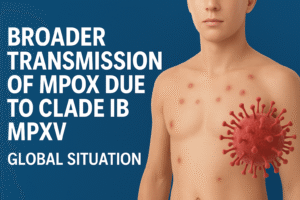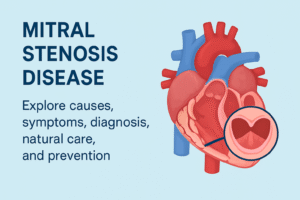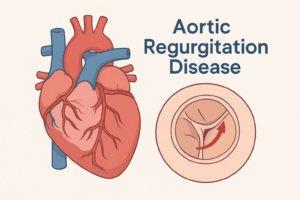Overview of Heart Attack (Myocardial Infarction)
A heart attack, medically known as myocardial infarction (MI), occurs when blood flow to a part of the heart muscle is blocked long enough to cause tissue damage or death. This is most commonly triggered by plaque buildup—comprised of fat, cholesterol, and other substances—in the coronary arteries that ruptures and forms a clot (thrombus).
Causes of Heart Attack
Coronary Artery Disease (CAD) is the most frequent cause, where atherosclerotic plaque narrows arteries and may rupture, triggering clot formation. Coronary Artery Spasm involves acute constriction of the artery, halting blood flow, often due to smoking, cold exposure, cocaine usage, or extreme stress. Embolism occurs when a blood clot from elsewhere travels and lodges in a coronary artery (rare). Spontaneous Coronary Artery Dissection (SCAD) is a tear in the arterial wall that reduces or blocks blood flow.
Stages of a Heart Attack
- Long-term Atherosclerosis: Gradual plaque buildup narrows arteries; symptoms may remain silent for years.
- Plaque Rupture: The plaque surface cracks, triggering clot formation and abruptly blocking blood flow.
- Ischemia (First Minutes): Oxygen deprivation causes chest pain, breathlessness, nausea, and anxiety; timely treatment can prevent severe damage.
- Injury (20–40 Minutes): Ongoing oxygen loss kills heart muscle cells; ECG changes emerge, and damage worsens.
- Infarction (Hours Later): Dead tissue is replaced with scar tissue, impairing heart pumping and possibly leading to arrhythmias, heart failure, or death.
- Recovery & Remodeling: Over days to months, scar formation and heart adaptation occur; rehabilitation and lifestyle changes aid recovery.
Symptoms of Heart Attack
Key signs include chest discomfort (pressing, squeezing, burning, or fullness in the center or left chest), pain radiating to arms, shoulders, neck, jaw, back, or upper abdomen, and shortness of breath. Other symptoms can include cold sweat, nausea, dizziness, lightheadedness, or unusual fatigue—especially in women, older adults, and diabetics, where “silent” heart attacks may occur. Immediate medical care is crucial.
Diagnosis
Doctors assess history and symptoms like chest pain, radiation, breathlessness, and risk factors such as smoking, hypertension, diabetes, and high cholesterol. Physical exams check vital signs and heart/lung sounds. Tests include ECG for electrical changes, blood biomarkers (troponin I/T, CK-MB, myoglobin), and imaging such as echocardiography, coronary angiography, and chest X-ray. Continuous monitoring with ECG and pulse oximetry helps guide treatment.
Treatment of Heart Attack
Emergency actions during the “golden hour” involve calling emergency services, providing oxygen if levels are low, and avoiding self-transport. Hospital interventions focus on reperfusion therapy—primary PCI (angioplasty + stent) is preferred, while CABG is for complex cases. Medications include antiplatelets, anticoagulants, beta-blockers, ACE inhibitors, and statins. Post-MI care involves cardiac rehab, lifestyle changes like quitting tobacco, healthy eating, weight control, and managing risk factors. Regular follow-ups with ECG and lab tests monitor progress.
Prevention of Heart Attack
A heart-healthy lifestyle is key: eat fruits, vegetables, whole grains, lean proteins, and healthy fats; limit saturated/trans fats, sugar, and sodium. Get at least 150 minutes/week of moderate exercise and strength training twice a week. Maintain a healthy BMI, avoid smoking, limit alcohol, manage stress, and get 7–9 hours of sleep. Regular check-ups for blood pressure, cholesterol, and blood sugar help detect risks early. Act promptly on warning symptoms.
Risk Factors
Non-modifiable: Age (risk rises after ~45 in men, ~55 in women), sex (men are at higher risk earlier), and family history/genetics.
Modifiable: High blood pressure, abnormal cholesterol, diabetes, smoking, obesity, poor diet, inactivity, excess alcohol, and stress.
Other contributors include metabolic syndrome, kidney disease, sleep apnea, drug use, and environmental pollution.
Global Burden & Epidemiology
In 2022, cardiovascular disease (CVD) caused around 19.8 million deaths worldwide. The World Heart Federation reported 20.5 million CVD deaths in 2021, about one-third of all deaths, with over 75% in low- and middle-income countries. CVD causes about 75% of all non-communicable disease deaths globally.
United States & India-Specific Data
In the U.S., about 805,000 heart attacks occur annually (605,000 first-time, 200,000 recurrent). A heart attack happens roughly every 40 seconds. In 2022, coronary heart disease caused 39.5% of CVD deaths, and heart attack deaths have declined by nearly 90% since 1970. In India, CVD is the leading cause of death and disproportionately affects younger adults. South Asia bears 60% of the global CVD burden despite having just 20% of the world’s population.
Summary Table
| Region/Scope | Metric | Value/Insight |
|---|---|---|
| Global (2022) | CVD deaths | ~19.8 million (~1/3 of global deaths) |
| Global (2021) | CVD deaths | ~20.5 million |
| Low/Middle-Income | Share of CVD deaths | Over 75% |
| U.S. (annual) | Heart attacks | ~805,000 |
| U.S. (2022) | CHD share of CVD deaths | ~39.5% |
| U.S. (1970–2022) | Death decline | ~90% |
| South Asia | Global CVD burden share | ~60% |
Final Takeaway
Heart attacks remain a major global health challenge. Early detection, effective treatment, preventive measures, and healthy lifestyle choices can drastically reduce risk and improve survival rates.
Frequently Asked Questions (FAQ)
Q1: What is the fastest way to help someone having a heart attack?
Call emergency services immediately, keep the person calm, loosen tight clothing, and if advised, help them take aspirin.
Q2: Can a heart attack occur without chest pain?
Yes, especially in women, older adults, and diabetics. Symptoms may include fatigue, breathlessness, or nausea.
Q3: How soon should treatment start for best outcomes?
Within the first hour (“golden hour”) to minimize heart muscle damage.
Q4: Is recovery from a heart attack possible?
Yes, with timely treatment, cardiac rehab, medications, and lifestyle changes, many people lead healthy lives post-MI.
Q5: What foods help prevent heart attacks?
Leafy greens, berries, nuts, fatty fish, whole grains, and foods rich in healthy fats like olive oil support heart health.






